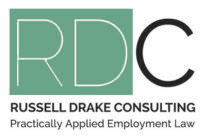With the Prime Minister announcing on Monday that the country will leave Level 4 status at 11.59pm on Monday 27 April, and will enter Level 3 for a period of two (2) weeks, many employers are now asking the question as to what this will practically mean for their business, and returning staff.
For many businesses’ life will see little change as the clear guideline from the Government continues to be “if you are able to continue to work from home – you should continue to do this.” With social distancing guidelines still in place this will mean a continuation of email, telephone, Zoom and Skype calls being the preferred methods of communications for at least the next two (2) weeks.
Though some office-based roles will be able to return to the business premises, the self – accreditation guidelines reinforce adherence to several core practices including:
- Maintaining at least a one (1) metre space between individuals
- Recording interactions (contact details) of people who visit the workplace
- Maintaining good hygiene (hand washing and sanitising) practices and ensuring surfaces are regularly disinfected.
For many business these practices will not be onerous, however the question to be asked is whether it is required to have the staff back at work, or whether a further two (2) weeks of having staff work from home would be more beneficial in assisting the country to move through this period with the least chance of an uplift in reported cases of COVID-19. This is a decision that businesses will need to make on a case by case basis and will also be dictated by economic pressures to get the cashflow moving through the business once again.
For roles that may not have been able to work from home (i.e. factory, warehouse, production or outside roles) the return to work question may be a little easier to answer as returning staff to their roles will directly contribute to the regeneration of revenue for the business. The same health and safety self-accreditation practices will however need to be demonstrated.
So, what could this mean in a practical sense and how will this affect the employer’s obligations to the employee’s terms and conditions of employment?
With the requirement to have people work “within their bubbles” for at least the two (2) week period of Level 3 employers should consider whether it is realistic to implement any of the following practices:
- Stagger starting, finishing and break times across the work force to ensure that ‘bubbles’ of staff have the least interaction with other ‘bubbles’ as possible
- Stagger working days for some employees with different ‘bubbles’ coming to the premises on alternate days – while others remain working from home on their ‘off-day’
- Amend shift times to enforce a break of at least 15mins between the ending of one shift and the commencement of the next (to promote social distancing separation)
- Operating the business for reduced daily hours or reduced days per week
- Reorganise the workplace to create greater distance between employees
- Encourage employees to ‘take a walk’ during their break times (staggered) to discourage close interaction over rest or meal breaks
In many cases business may be able to achieve to the above practices within the existing employee terms and conditions, however for many others any change even on a short-term basis, may require a temporary change to an employee’s terms and conditions. Remember, the full provisions of the Employment Relations Act 2000 continue to apply through this period meaning that any change to an employee’s hours/days of work, or agreed pay rates, needs to be subject to consultation and agreement with the effected staff.
Given that cash-flow will remain tight for many businesses it may therefore be a requirement for staff to gradually return to work with reduced or flexible work hours being an option. All employees must be paid for all hours worked however as the Government Wage Subsidy is still in operation through this time options may include:
- Continuing to pay the $585 as a minimum and having the employee work a limited number of hours within the business up to the value of the subsidy payment.
- Continuing to provide the subsidy as a default and paying employees an agreed hourly rate for each hour worked in addition to the value of the subsidy
- Maintaining an agreed payment less than 100% of the usual weekly remuneration and having the employee work up to the value of that payment, with options for additional payments for additional work.
- Agreeing a minimum number of work hours per week with a flexible arrangement over and above this.
Even if you have entered a temporary variation of the employees terms and conditions to cover the Level 4 Lockdown period, it would be beneficial to commence and agree a further variation with the employees to reflect the desired working arrangements of Level 3, with this ideally being signed off prior to any requirement to return to work.
Some employees, or Unions, may require a full reinstatement of the original terms and conditions to restore the full earnings of the employees from day one of level 3, arguing that the employee is fully available for work, and the employer is in default for failing to provide the employee with full time employment. In such cases this will require careful negotiation as being unreasonably pressured to return to 100% employee payment obligations may mean the difference to the business remaining viable or a restructure of some form, and potential redundancies, from occurring.
The return to the ‘new’ Level 3 is also the ideal time for business owners and managers to consider and commence any required restructuring of the business, if this has not already commenced during the Level 4 Lockdown period.
The reality is that many businesses will be required to reduce staff numbers (if it is not practical to retain staff on lesser terms and conditions) and therefore the implementation of a procedurally correct restructure consultation proposal may be necessary over the next 2 – 3 week period. It is therefore an option, and probably preferable, that staff who may be subject to potential redundancy remain off work (on the existing payment arrangements) while the consultation process is in place, with decisions then being made regarding their ongoing employment status made prior to the end of the two (2) week Level 3 period. Remember however that, if you are receiving the Government Subsidy payments for any of the potentially affected staff, you have signed an agreement with the Government that you will retain these people within your employment for at least the length of the 12 week subsidy period.
For clarification purposes the initial subsidy period commenced on 15 March, although the country did not go into lockdown until the 26 March. It is widely accepted therefore that the 12-week period will continue until the week ending Friday 12 June – regardless of when you applied for and were paid the lump sum subsidy payment.
The final termination date for any employees receiving the subsidy should therefore coincide with the ending of this period at the earliest, with annual leave entitlements being paid in the next scheduled payroll date after the termination date.
Arrangements for any payments during any extended period of notice will have to be agreed as a component of the restructure consultation process.
As a business Russell Drake Consulting has already commenced many restructuring and/or temporary variation engagements with clients so please feel free to contact us if you have any questions or need assistance in planning or implementing these processes. Legally compliant documentation and processes are vital in these situations.

